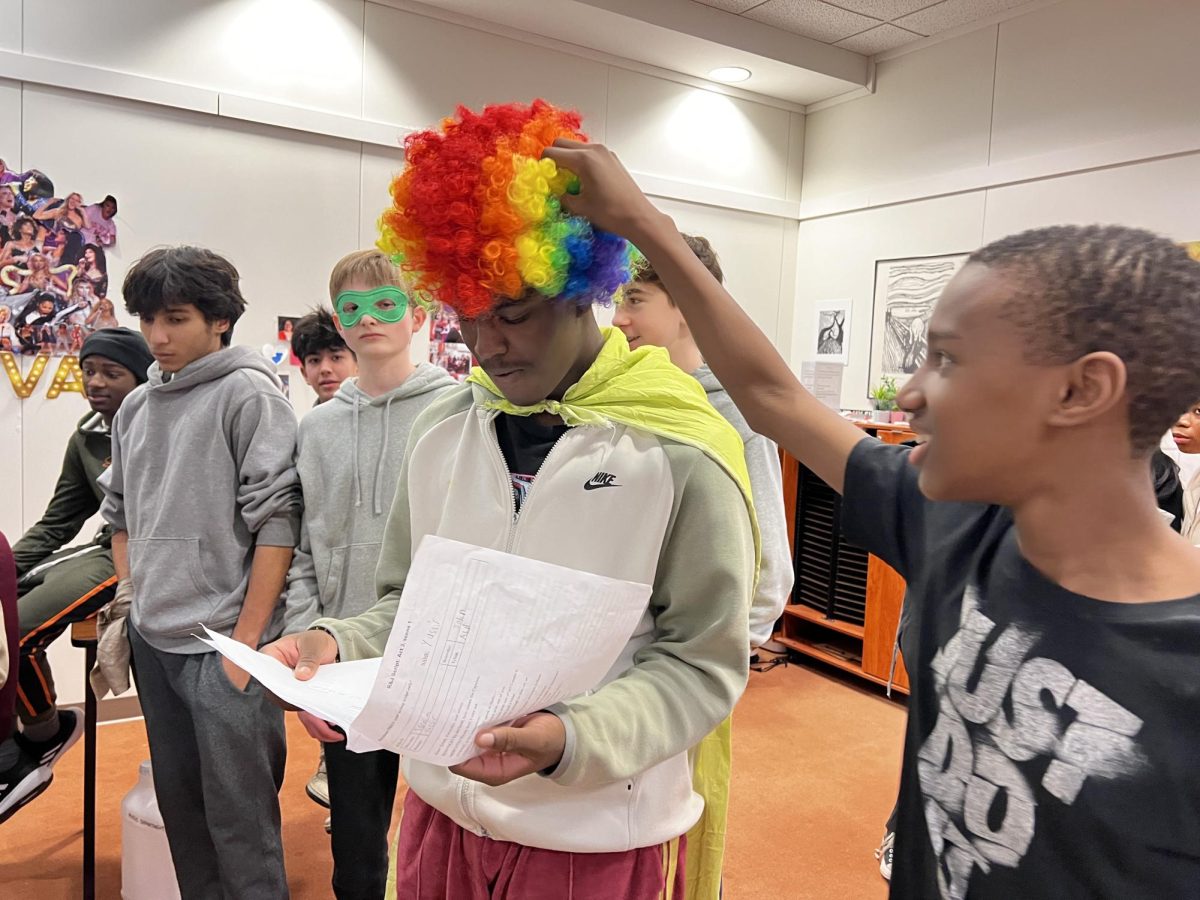75 teenage students. Two teachers. Poor lighting and internet.
For Burlington High School Social Studies teacher Ron MacNeil, this chaos is an experience he endures regularly: supervising a study hall in the auditorium.
“As a study hall space, it’s awful, it’s a bad idea,” MacNeil said. “These are freshman, they should actually be looking to their study hall teachers for help and guidance. We can’t do that here.”
BHS Principal Tracy Racicot said the change was a result of a shortage of staff.
“Even with two teachers, the space is manageable,” she said.
MacNeil supervises the space several times a week along with teacher Sean Fleming and an intern. The task has definitely been a challenge. Dim auditorium lighting makes it difficult for students to see assignments. No desks or traditional chairs exist for writing and completing work.
WiFi is also a problem. BHS had to install stronger internet in the space, due to a combination of poor bandwidth and too many kids streaming videos and movies. Racicot said that blocking certain websites such as Netflix and Youtube could be a problem for teachers who use them in the classroom.
MacNeil and Fleming need to always keep their eyes out and remain on patrol. Occasionally MacNeil will patrol the aisles to monitor behavior, but he has since given up. The students just go back to goofing off after he leaves.
“We can’t give them the kind of attention they need, we can’t give them any help,” he said. “If we go help one kid then it gets out of hand.”
Around 70 students lounged on plush auditorium chairs, with chromebooks on their laps, the latest Netflix show turned on and cellphones in hand on Monday afternoon. Loud noise of chatter and laughter made its way into the far reaches of the space. Two teachers an intern sat at the table at the front, trying their best to keep the room under control.
Auditorium study halls are proctored by MacNeil on blue days with the assistant of Fleming and a intern. Fleming supervises his own study hall on white days with only 30 students. BHS began an auditorium study hall last year with 43 students that was supervised by Andreas Nolte.
Study halls in a classroom environment exist at BHS, but scheduling conflicts have proved to be a hazard. French teacher Catherine Tetu teaches a White 1 study hall with only eight students, with three signed up for second semester. Science teacher Richard Meyer only has 12 students in his Blue 1 study hall. Latin teacher Noralee Cartier has only eight for White 2. The smallest is taught Blue 2 by Nancy DiMasi with only five students.
“This is a bad idea, but it’s budget cuts that make [the study hall] the way it is,” MacNeil said. “It’s really sad.”

Wondu Suma is one of the dozens of freshman that have to endure the 90 minutes.
“It’s not a work friendly environment,” he said.
Connor Sweeney, also a freshman, feels equally frustrated.
“You waste like an hour and a half of time,” Sweeney said. “It’s loud, it’s distracting and I have to work on my lap.”
The issue of the study hall drew harsh complaints and criticism from BHS parents at a Burlington School Board meeting on April 12. Clare Wool was one of them. Her oldest son, Henry, who is currently a sophomore, had a study hall and free block everyday of the week last year because all ninth grade classes were full.
“For up to 440 minutes a week, he sits in the BHS auditorium with one teacher supervising 42 plus adolescent students, without desks, adequate light, or academic stimulation,” Wool, an active PTO member said while addressing the board. “As a taxpayer and a parent, with a school budget of 84 million dollars, this is unacceptable.”
The auditorium study halls points to a larger problem at the high school: increasing class size. Budget reductions in over the past year have significantly reduced course offerings. Superintendent Yaw Obeng addressed the issue at the April 12 meeting, citing his rationale behind the larger cuts at BHS.

“We want small classes at the high school, we want smaller classes K-5 and at the middle school,” Obeng said. “We have our smallest sizes at the high school when we should be going the other way around, putting more resources are the early stages.”
Senior Owen Clark explained during the public comment period how free blocks have been detrimental to his learning. He was only able to take five courses his junior year.
“Five classes doesn’t cut it, and frankly the required minimum at Burlington High School is to have six classes,” Clark said.
Vermont has an average per student expenditure of $23,149 which is the highest in the nation, according to statistics from the National Education Association. Burlington voters approved a $68.8 million budget in March, which despite increasing by 1.72 percent, prompted $1.4 million in cuts under the Act 46 spending cap.
Going forward, Racicot hopes to provide learning opportunities to study hall students, such as bringing in community guests.
“It is our strong preference as a school moving forward to not have large study halls,” she said.











